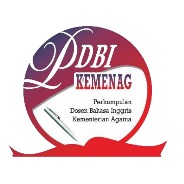Women’s Stereotypes in “Pretty Girl” Song Lyrics: A Critical Discourse Analysis Study
Abstract
One of the components in music or song which can be used as an access to the image of women is song lyrics. Woman image presents mental, spiritual, and daily behavior expression by women in many aspects; physical and psychological as women's self-image, family as well as community traits as part of social images. Through language written as song lyrics, a discourse can be expressed according to what the songwriter feels and thinks. The objective of this study is to find out how the image of women which becomes a stereotype is represented in the lyrics of the song "Pretty Girl" by Maggie Lindemann. This study was a qualitative study using the Critical Discourse Analysis (CDA) approach with Norman Fairclough's model. The model was used to analyze the feminist discourses contained in the lyrics of the song "Pretty Girl" by Maggie Lindemann. The analysis found that the song "Pretty Girl" sung by Maggie Lindemann contained discourses about Maggie Lindemann's rebuttal of women stereotypes.
Keywords
Full Text:
PDFReferences
Ang, Z. (2014). The effects of discourse markers on the reading comprehension and speed of chinese learners of English. International Journal of English Language and Linguistics Studies, 2(2), 27-49. Retrieved from https://www.eajournals.org/wp-content/uploads/The-Effects-of-Discourse-Markers-on-the-Reading-Comprehension-and-Speed-of-Chinese-Learners-of-English.pdf.
Aprilia, F., Lustyantie, N., & Rafli, Z. (2020). The effect of reading interest and achievement motivation on students’ discourse analysis competence. Journal of Education and eLearning Research, 7(4): 368-372. Retrieved from https://files.eric.ed.gov/fulltext/EJ1278481.pdf.
Brown, G., & Yule, G. (1983). Discourse analysis. Cambridge University Press.
Budiwati, T. R. (2011). Representasi wacana gender dalam ungkapan berbahasa Indonesia dan bahasa Inggris: Analisis wacana kritis. Jurnal KAWISTARA, 1(3), 213-320. Retrieved from https://jurnal.ugm.ac.id/kawistara/article/view/3926/3207.
Clark, H. H., & Clark, E.V. (1977). Psychology and language. Harcourt Brace Javanovich.
Cook, G. (2009). Discourse. Oxford University Press.
Foucault, M., & Nazzaro, A. M. (1972). Psychological man: approaches to an emergent social type. Skidmore College.
Gilang, B. (2020). Feminisme. Lembimjar Neutron Yogyakarta.
Halliday, D. (1978). Psychology and language. Harcourt Brace Javanovich.
Hamad, I. (2005). Lebih dekat dengan analisis wacana. MediaTor, 8(2), 325-344. https://doi.org/10.29313/mediator.v8i2.1252.
Imam, A. C. (2012). Analisis wacana Van Dijk pada lirik lagu Irgaa Tani (My Heart Will Go On). Journal of Arabic Leaning and ETeaching, 1(1), 1-8. Retrieved from file:///C:/Users/10/Downloads/1504-Article%20Text-2884-1-10-20130627.pdf.
Jabbar, A. R. A. AR. (2020). Stereotype perempuan di negara patriarki. Retrieved from https://washilah.com/2020/10/stereotipe-perempuan-di-negara-patriarki/.
Jansen, I. (2008). Discourse analysis and Foucault’s “Archaeology of knowledge”. International Journal of Caring Sciences, 1(3), 107–111. Retrieved from https://www.internationaljournalofcaringsciences.org/docs/vol1_issue3_01_jansen_abstract.pdf.
Juliantari, N. K. (2017). Paradigma analisis wacana dalam memahami teks dan konteks untuk meningkatkan kemampuan membaca pemahaman. Acarya Pustaka, 3(1), 12-25. https://doi.org/10.23887/ap.v3i1.12732.
Nunan, D. (2003). Practical English language teaching. Boston: Mc Graw Hilss.
Pardede, M. J., & Neisya. (2020). Oppression toward the marginal society in patricia mccormick’s novel “sold”. Journal of English Teaching, Linguistics, and Literature, 2(2), 77-94. Retrieved from http://eprints.binadarma.ac.id/15542/1/Neisya%20%282%29.pdf.
Priadi, A. (2015). A discourse analysis on dialogues in novels and its implication to improve students’ reading comprehension. International Journal on Studies in English Language and Literature (IJSELL), 3(2), 57-64. Retrieved from http://ejournal.unp.ac.id/index.php/selt/article/view/6684/5225.
Saputri, S. M. D., & Neisya, N. (2021). Woman’s struggle towards stereotypes in the case of the missing marquess: an enola holmes mystery. English and Literature Journal, 8(2), 54-65. https://doi.org/10.24252/10.24252/elite.v8i2a5.
Slembrouck, S. (2009). What is meant by discourse analysis. Ghent University.
Subagyo, P. A. (2010). Pragmatik kritis: Paduan pragmatik dengan analisis wacana kritis. Jurnal Linguistik Indonesia, 28(2), 177-188.
Van Dijk, T. A. (1988). News as discourse. Lawrence Erlbaum Associate, Publishers.
Wardani, T.A., Setiawan, S., & Retnaningdyah, P. (2020). Critical discourse analysis: the knowledge power presented by scholar in creating research article. Linguistic, English Education and Art (LEEA) Journal, 4(1), 161-176. https://doi.org/https://doi.org/10.31539/leea.v4i1.1367.
DOI: http://dx.doi.org/10.29240/ef.v6i2.4902
Refbacks
- There are currently no refbacks.
Copyright (c) 2022 Fitria Aprilia, Neisya Neisya

This work is licensed under a Creative Commons Attribution-NonCommercial-ShareAlike 4.0 International License.
INDEXED BY:
 This work is licensed under a Creative Commons Attribution-NonCommercial-ShareAlike 4.0 International License
This work is licensed under a Creative Commons Attribution-NonCommercial-ShareAlike 4.0 International License
@ ENGLISH FRANCA : Academic Journal of English Language and Education
Jl. Dr. AK Gani No 1 Dusun Curup, Rejang Lebong Regency, Bengkulu Province, Indonesia, 39119.
Dr. Eka Apriani, M.Pd., email: efranca@iaincurup.ac.id, eka.apriani@iaincurup.ac.id.




.png)












